Picture this. You are on social media and see an amazing digital painting. Then, you find out it was made by AI in just 12 seconds.
It’s good and also a bit strange. If machines can make art, is going after a job in art still a good idea?
Here is the truth: creativity is more important now than ever before. But the way we show and share it is changing very fast. The people who do well with art today do not work against AI. They learn to use it as a tool to help with their art.
If you have ever wondered, "Should I keep learning art now that there is AI?" the answer is yes. But it may not be for the reason you think.
Key Takeaway
Yes, it’s absolutely worth pursuing an art career in the AI era. While AI can mimic style, it can’t replicate human imagination, emotion, or story. Artists who adapt — by embracing technology, building online visibility, and learning to market themselves — will not only survive but thrive in this new creative landscape.
Table of Contents
- The Creative Shift: How AI is Changing Art
- Why Human Creativity Still Matters
- How to Build an Art Career in the AI Era
- Tools vs Talent: Making AI for You
- Stories from Artists Thriving in Tech
- The "ART" Framework for Creative Relevance
- Common Myths About AI and Art
- Conclusion
The Creative Shift: How AI Is Changing Art
AI tools like Midjourney, DALL·E, and Adobe Firefly have made art creation more accessible — and more competitive.
But here’s the twist: accessibility doesn’t replace authenticity.
AI can remix, but it can’t feel. It doesn’t experience heartbreak, awe, or the spark that comes from years of sketching, failing, and trying again. Those imperfections — the human fingerprints behind creativity — are what make your art irreplaceable.
Think of AI like a fast assistant: it can brainstorm ideas, fill backgrounds, or help you visualize concepts. But you decide the story, message, and meaning behind the work.
“AI can help you paint faster — but it can’t tell you why you picked up the brush.”
Why Human Creativity Still Matters
Art isn’t just about the final image. It’s about connection.
People buy art — and follow artists — because of the emotion and story behind it. Your creative choices, your perspective, your lived experiences — these are what separate your work from AI-generated images.
Even brands know this. In marketing, audiences crave authenticity more than ever. A hand-painted mural, a raw sketchbook post, a behind-the-scenes process video — these remind people that a real human made this.
AI might automate tasks, but it can’t replace trust, empathy, or creative intuition. Those are uniquely human skills.
How to Build an Art Career in the AI Era
If you want to be a successful artist today, think of your art career as both a creative practice and a digital business. Here’s how to start:
1. Define your creative voice.
AI can replicate techniques, but not your perspective. What stories do you want your art to tell? What feelings do you want to evoke?
2. Learn to collaborate with AI tools.
Use AI as a creative partner — for moodboarding, color palettes, composition sketches, or brainstorming. Treat it like a second pair of hands, not a replacement for your vision.
3. Build an online presence.
Your digital visibility matters more than ever. Start a portfolio site (Squarespace, WordPress, or Framer), share your creative process on social media, and grow your email list.
4. Market your work strategically.
Don’t just post your art — share your story. Talk about your process, your struggles, your “why.” Marketing is simply storytelling with intention.
5. Keep learning — and adapting.
Artists who stay curious and learn new tools (digital, AI, or otherwise) will always have the edge. The future belongs to the flexible.
Tools vs. Talent: Making AI Work for You
Here’s a mindset shift: AI isn’t competition; it’s collaboration.
When you learn how to guide AI tools with your vision — instead of letting them dictate it — you amplify your creative reach.
Try these practical examples:
- Use AI for thumbnail sketches to test compositions before painting.
- Generate color variations to explore palettes faster.
- Ask AI to write captions or titles inspired by your work for social media posts.
Let technology handle the repetitive parts so you can focus on creating the meaningful parts.
Stories from Artists Thriving with Tech
Many contemporary artists are already integrating AI without losing their artistic identity:
- Refik Anadol uses AI to transform data into immersive art installations.
- Sofia Crespo explores biodiversity and machine learning to reimagine natural forms.
- Countless independent artists use AI to speed up workflow while keeping their voice front and center.
The takeaway? Those who experiment early often end up leading the movement.
The “ART” Framework for Creative Relevance
Use this simple three-step ART Framework to stay relevant — and inspired — in the AI era:
A — Adapt.
Stay curious. Explore AI tools without fear. See what sparks ideas or saves time in your workflow.
R — Reinvent.
Experiment with new formats or mediums — like mixing traditional painting with digital overlays or NFT-style drops.
T — Tell.
Share your story everywhere: your process, your wins, your behind-the-scenes moments. That’s what builds connection and loyalty.
Remember: relevance isn’t about keeping up — it’s about showing up.
Common Myths About AI and Art
Myth #1: “AI will replace artists.”
Reality: AI can replicate output, but not originality. It can’t feel or imagine.
Myth #2: “Learning art is pointless now.”
Reality: Art education teaches observation, discipline, and emotional literacy — skills that make you more adaptable in any creative field.
Myth #3: “Only tech experts can use AI.”
Reality: Most AI tools are built for ease of use. If you can use Photoshop or Pinterest, you can experiment with AI prompts and tools.
Final Thoughts
So, is it worth having an art career in the AI era?
Absolutely — because your creativity is the one thing AI can’t automate.
AI is a tool. You are the artist.
And when you combine your human perspective with smart use of technology, you create art that’s not only beautiful but undeniably yours.








